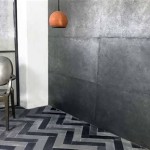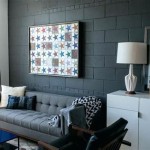How Does an Interior Designer Get Paid?
Interior design, the art and science of enhancing interior spaces to achieve a desired aesthetic and functionality, is a thriving profession. While the creative aspects of the field often take center stage, the financial realities of being an interior designer are equally important. Understanding how interior designers get paid is crucial for both aspiring professionals and clients seeking their services. This article delves into the various payment structures employed by interior designers, shedding light on the factors that influence their compensation.
Hourly Rates
One common method of compensation for interior designers is by charging an hourly rate. This approach is particularly prevalent among designers working on smaller-scale projects or those offering specialized services, such as space planning or color consultation. Hourly rates can vary substantially depending on the designer's experience, location, and the complexity of the project. For example, a seasoned designer in a major metropolitan area might charge a higher hourly rate compared to a newer designer in a smaller city.
The advantage of hourly rates for clients is that they provide transparency and predictability. Clients can clearly see how much they are paying for each hour of the designer's time. However, hourly rates can sometimes be less cost-effective for larger projects, as the total cost can escalate quickly. For designers, hourly rates can be enticing as they provide a consistent revenue stream, but they can also lead to longer project timelines, as they have an incentive to extend the time spent on each project.
Project Fees
Another common method for interior designers to get paid is through project fees. This method involves a fixed price for the entire project, regardless of the time it takes to complete. Project fees are often preferred for larger projects, such as residential renovations or commercial space design. This approach offers clients a clear budget and eliminates the uncertainty associated with hourly rates.
There are various ways of structuring project fees. Some designers might utilize a flat fee, while others might base their fees on a percentage of the total project cost (e.g., 10% to 20% of the project's budget). The advantage for clients is that they have a pre-defined budget, promoting financial stability and predictability. For designers, project fees allow them to focus on delivering a high-quality design within a set timeframe. However, designers must carefully estimate their time and expenses to ensure profitability, as they are not financially rewarded for exceeding the expected time commitment.
Retainer Fees
Retainer fees are often used by interior designers who provide ongoing services or have a long-term client relationship. A retainer fee is a pre-paid amount, typically paid at the beginning of a project or contract, that ensures the designer's availability and commitment to the client. These fees can be structured as a lump sum or as monthly installments.
Retainer fees benefit clients by securing the designer's expertise and availability. They provide a sense of exclusivity and prioritize the client's project. For designers, retainer fees provide a consistent income stream and allow them to prioritize their clients. However, retainer fees may not be suitable for all projects or clients, as they require a level of commitment and trust between both parties.
Additional Considerations
Beyond the primary methods of compensation, there are additional factors that influence how an interior designer gets paid. These include:
- Experience and Reputation: Designers with extensive experience and a strong reputation often command higher fees.
- Location: Interior design fees tend to be higher in metropolitan areas compared to smaller cities.
- Project Complexity and Scope: Large-scale projects with intricate details or demanding timelines often require higher fees.
- Materials and Labor Costs: The cost of materials and labor significantly impacts the overall project budget.
- Travel Expenses: Clients may be responsible for reimbursing the designer's travel expenses for site visits or consultations.
Conclusion
The way an interior designer gets paid is multifaceted, influenced by a combination of factors, including experience, project scope, and client preferences. Choosing the right payment structure depends on the specific project and the relationship between the designer and the client. Understanding these various structures empowers both parties to make informed decisions that ensure a successful and mutually beneficial collaboration.

2025 Understanding How Interior Designers Get Paid Archova Visuals

2025 Payment Schedules When Do Interior Designers Get Paid Archova Visuals

How Much Does An Interior Designer Earn We Are Hiring

How Much Does An Interior Designer Get Paid Style Your Decor

How Much Does An Interior Designer Cost

Careers In Interior Design The Ultimate Guide Nyiad

10 Highest Paying Countries For Interior Designing Jobs Top Companies Avg Salary

The Complete Guide To Structuring Interior Designer And Architect Fees Part 1 Types Of Services Corresponding

I Hired A Professional Interior Designer What Is Worth Over 1 000 Shocking Results

Careers In Interior Design The Ultimate Guide Nyiad
Related Posts








